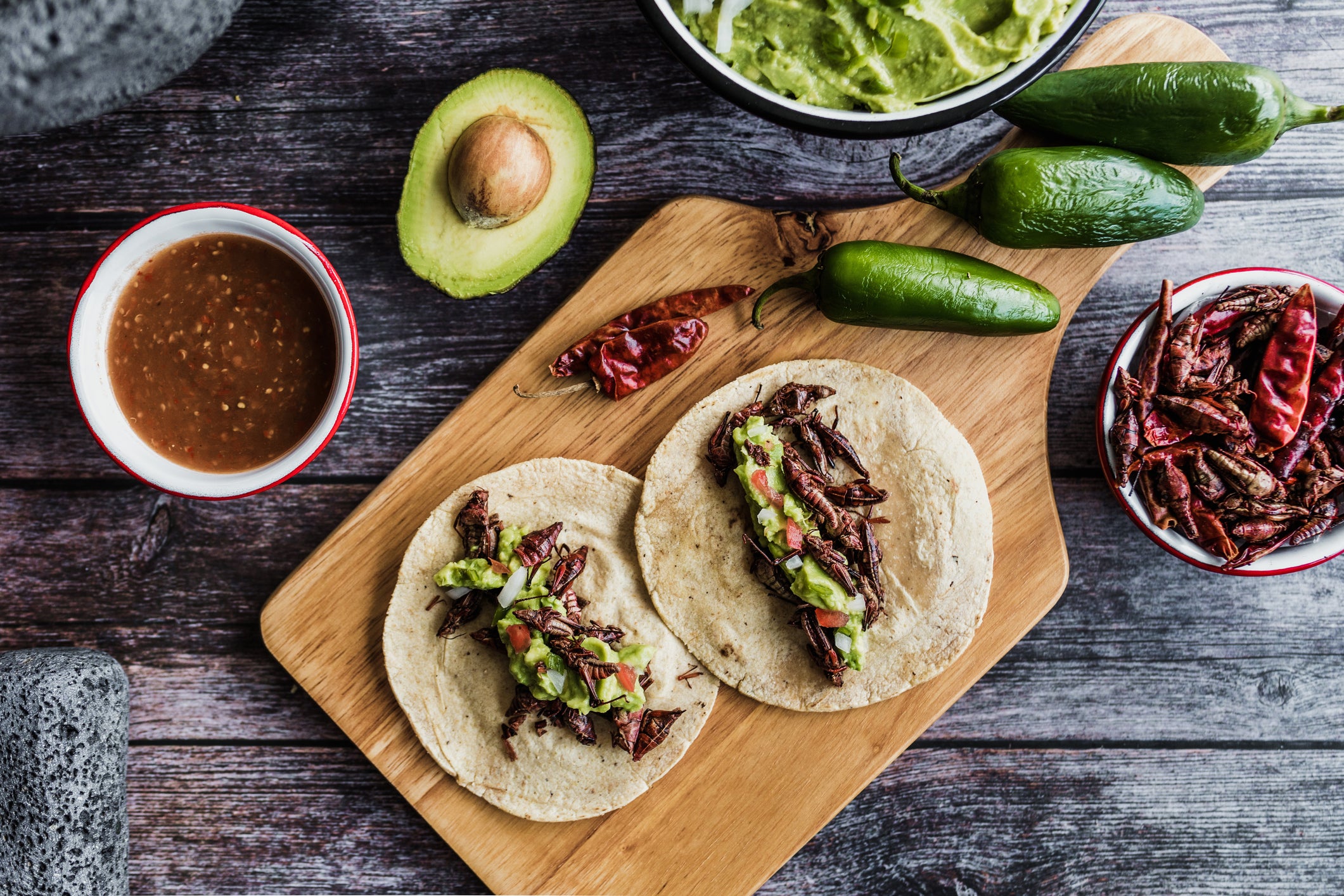Just the idea of eating insects can be stomach-churning for some of us. But before you dismiss the thought completely, let us tell you a little about what you’d be missing.
"Some taste sweet, others taste lemony and zingy and some taste like crisps or toasted rice," says Dr Sarah Beynon, director of Bug Farm Foods. She's talking about insects, which feature prominently on the menu at the UK's only insect-based restaurant, Grub Kitchen, based at a West Wales farm and wildlife reserve.
Throughout much of history, and in much of the world, insects have been a standard part of the human diet (see box). Many people, though, are wary of the idea. "There are cognitive reasons derived from our social and cultural experiences - the so-called ‘yuck factor’ - that make the thought of eating insects repellent to many Europeans," says Giovanni Sogari, a social and consumer researcher at the University of Parma. But attitudes can change, he says.
This is already starting to happen. A recent report from Meticulous Research predicts our consumption of edible insects will increase by 26.5% between 2020 and 2027. The market, it says, will reach $4.63 billion by then – representing 1,398,863 tonnes of insects. Such a significant increase is hard to ignore.
One of the longest suppliers of insect-based foods in the UK is Crunchy Critters, which has been supplying insect-based snacks, including buffalo worms, mealworms and crickets, since 2011. A spokesperson told us: "Consumers are getting a little more accepting of trying whole edible insects or products containing ground up insects."
There are clear environmental benefits to eating insects, not least that it’s a good way to reduce your carbon footprint. According to Meticulous Research, to produce the same amount of protein as cattle, crickets need 12 times less feed, 15 times less land and 2,000 times less water. They also produce 100 times less greenhouse gas.
Insect farming is also kinder when it comes to animal welfare, says Beynon, adding: "You can farm insects ‘intensively’ in a small space - and vertically, with one box of insects on top of another - to feed a growing human population without it impacting on their welfare," she says. "You can also kill insects humanely by cooling them down, freezing them and then holding them at a low temperature. Insects respond to this cooling as they would to cold weather: they shut down their body functions and, if held at a low enough temperature for long enough, they simply don't wake up again."
But that’s not all. They're also extremely nutritious – low in saturated fat and sugar, high in protein and a good source of prebiotic fibre, B12 and iron. "We often refer to insect powder as ‘insect protein powder’," says Beynon. "Some insect powder can even contain more calcium than milk and more iron than spinach."
While it's the potential for the human diet that grabs the headlines, there's also an increasing trend towards using insects as animal feed. Insects form a protein-rich feedstock, and are becoming increasingly cost-effective as soy meal prices continue to rise. And unlike soy, they can be produced anywhere in the world.
Supported by the government’s Industrial Strategy Challenge Fund (ISCF) a consortium headed by insect farmer Entocycle has launched a project to create the UK’s first large-scale industrial insect farm. The plan is to feed food waste to black soldier flies to create a sustainable, organic insect-based protein feed for farmed animals. Pigs, chicken and fish all naturally eat similar foods, so it’s likely the initiative will be a success.
"Through the use of insects we can guarantee local supply chains – the early experience of Covid-19 has shown just how important this will be in the future – while making significant reductions to CO2 emissions caused by the production of traditional feed ingredients," says Keiran Whitaker, founder of Entocycle. "The positive environmental impact could be huge."
The project will also examine the use of insects to create fertiliser from their faeces and exoskeletons. It's known as frass, and is not only organic, it’s high in soil nutrients. Frass is becoming increasingly attractive across Europe. There, the 'Farm to Fork' strategy calls for 25% of agricultural land in the EU to be under organic farming principles by 2030.
But things aren’t running quite so smoothly when it comes to the British insect industry. Brexit has set the process back and the UK's Food Standards Agency (FSA) is asking producers of edible insects to reapply, at a possible cost of tens of thousands of pounds.
"Millions of pounds of public funds, for example through Innovate UK, have gone towards the development of insect-based food. Our company is part of seven UK-based SMEs, which have recently been granted a share of EU assistance worth €410,000 towards the development of the edible insect sector. Yet, the FSA is now hindering its very development," complains Tiziana Di Costanzo, co-founder of the Horizon Insects urban farm in West London.
"The fact that for millennia more than two billion people in 80 per cent of the world have regularly consumed more than 2,000 species of edible insects, and that in Europe, even before the novel food regulation came into force, millions of people were already eating insects, should be evidence to grant a review of the current Novel Food Status classification."
Leo Taylor of insect supplier Bug says he also hopes to see the situation resolved soon, perhaps by classifying insects as a traditional food - which have less stringent requirements – rather than a novel food. He’s hopeful the FSA will be supportive, adding, "We think there is an opportunity to be more flexible and actually create fewer barriers to approval. We'd love to use Mexican chapulines or mopane worms, for example."
Over the coming years, increasing pressure on global food supplies is likely to make eating insects an ever-more attractive proposition. According to the IPIFF, demand for meat is set to increase by 72% between 2000 and 2030. By then, however, the world will be falling short of protein to the tune of 60 megatonnes. "Relying on cheap, intensively farmed meat for protein comes at a drastic cost to our environment in terms of greenhouse gas emissions, chemical usage and water pollution," says Beynon. "This is why we need additional, alternative protein sources with lower environmental costs."

